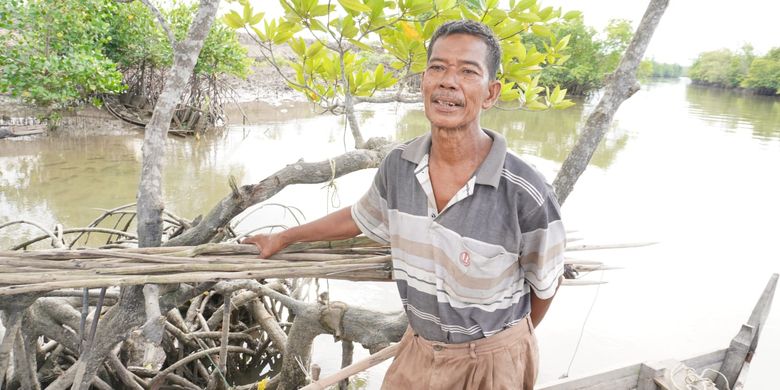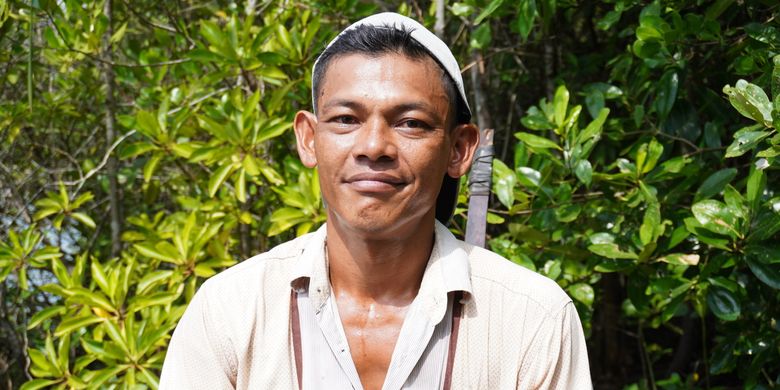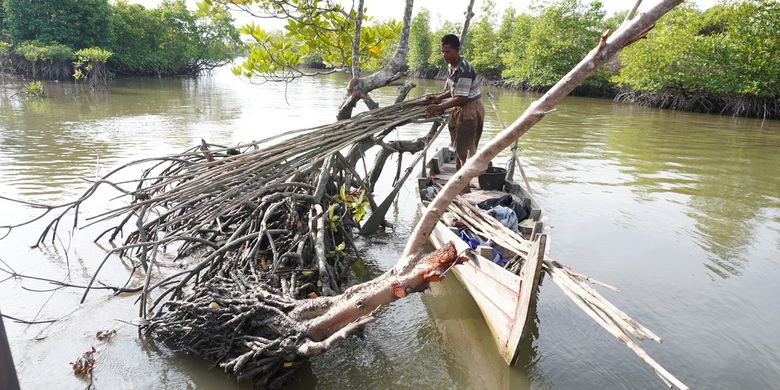This story excerpt was translated from bahasa Indonesia. To read the original story in full, visit Kompas.com. You may also view the original story on the Rainforest Journalism Fund website. Our website is available in English, Spanish, bahasa Indonesia, French, and Portuguese.

MEDAN — The destruction of mangrove forests in North Sumatra threatens the lives of traditional fishermen and the coastal environment.
Mangrove forests in Sei Siur Village, Pangkalan Susu District, Langkat Regency, North Sumatra are slowly turning into aquaculture areas, oil palm plantations, and are being converted into steam power plant (PLTU) areas. Traditional fishermen are biting their fingers after hundreds of hectares of mangrove forest disappear.
The catch is a source of livelihood for the community. Over time, the lives of traditional fishermen have become increasingly difficult due to the conversion of mangrove forests. Many traditional fishermen have switched professions to become construction workers. The rest are resigned to the situation. Based on field observations, the mangrove forests around this village appear to be in good condition from the outside. But when you go inside, it turns out that the mangrove forest has been cleared, the trees cut down for ponds and oil palm. Some are suspected to be used as mangrove tourism areas.
Head of the Mangrove Rehabilitation Working Group (Pokja RM) Sumatra Region, Giri Suryanta, said that so far, the causes of mangrove forest damage include the conversion of functions into ponds, plantations, and encroachment. Judging from the indicative target of accelerating mangrove rehabilitation (PRM), North Sumatra's mangrove forest is 57,490 hectares while the potential or damaged mangrove forest area is 29,417 hectares. By 2022, the province has a rehabilitation target of 13,357 hectares but only 373 hectares have been realized.

As a nonprofit journalism organization, we depend on your support to fund more than 170 reporting projects every year on critical global and local issues. Donate any amount today to become a Pulitzer Center Champion and receive exclusive benefits!










